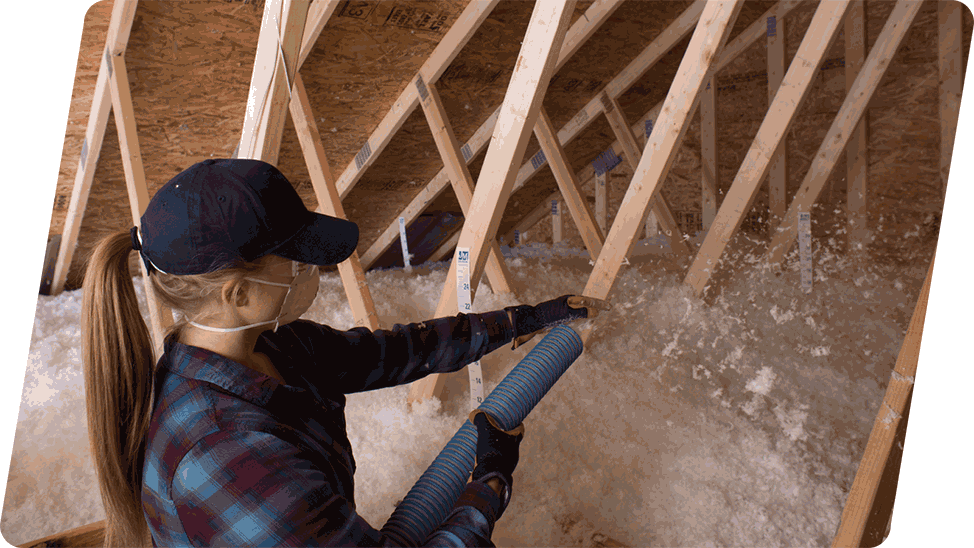At Johns Manville, we strive to be a valuable resource when it comes to insulation. From R-values to various kinds of material, there’s a lot to take in. So, when you have a question, we’re here to help. Here’s a question we recently received from a JM customer working on their older home:
“I have a 45-year-old home that I want to bring up to code to R-39 from R-3. I had an insulation contractor provide me an estimate and I thought all they would have to do is add batts to the existing insulation. However, while they said I could do that, they suggested I would be better off removing the old stuff and replacing it with new insulation. What’s your recommendation?"
This sounds like this homeowner is starting in their attic. Overall, you’re correct—it’s easier to add to existing insulation than to replace it entirely. Removing the insulation from the attic of a 45-year-old home is going to be a messy, dusty undertaking. If you can avoid the added time and effort of having to remove the insulation, then the job of simply adding new insulation to what’s already there gets that much easier.
If you have insulation with a facing currently in place, you’ll need to remove the old material first, but, if you have loose fill insulation or fiberglass batts or rolls in place that are unfaced, you can simply add the additional amount needed to reach your desired R-value on top. A great JM product for your attic is our Attic Protector® blow-in fiberglass insulation. Blow-in insulation is a fast and thorough way to insulate attics and cover hard-to-reach places and you can install the material to any depth needed to reach the R-value wanted. In this instance, the blow-in insulation would need to be between 15.3 and 17.4 inches thick to be R-39—check out our data sheet to find out how thick your blow-in insulation needs to be to achieve your desired R-value.
For an area such as the bedroom walls, it may be easier to pull the old insulation out and to replace it with a new piece at your desired R-value. If you don’t know what R-value you need, determine which is best for where you live by checking the map below.

Next, decide if batts or rolls will be best for your project. Both batts and rolls are equally effective, the main difference is the method you use to install the insulation. If you’re installing insulation in walls that have many obstacles such as pipes and electrical cables, it may be easier to use batts because they are precut in smaller pieces and may be easier to split for wires and cut out pieces to fit around outlets and junction boxes. If you have few obstacles in the wall and have a ceiling that is higher than 8 feet, rolls are a great option because you simply roll it out and cut to the desired size, then place it in your cavity for a perfect fit. A great product for DIYers is our ComfortTherm® fiberglass batts and rolls. ComfortTherm is wrapped in plastic to reduce itch and dust during installation and provides excellent temperature and noise control. If ComfortTherm isn’t available in a store near you, any of our fiberglass batts or rolls with the corresponding R-value to your needs will do the trick.
Installing insulation doesn’t have to be a tedious task. Check out our homeowner page for more information and resources. Come back for more DIY insights and ideas for you home.

